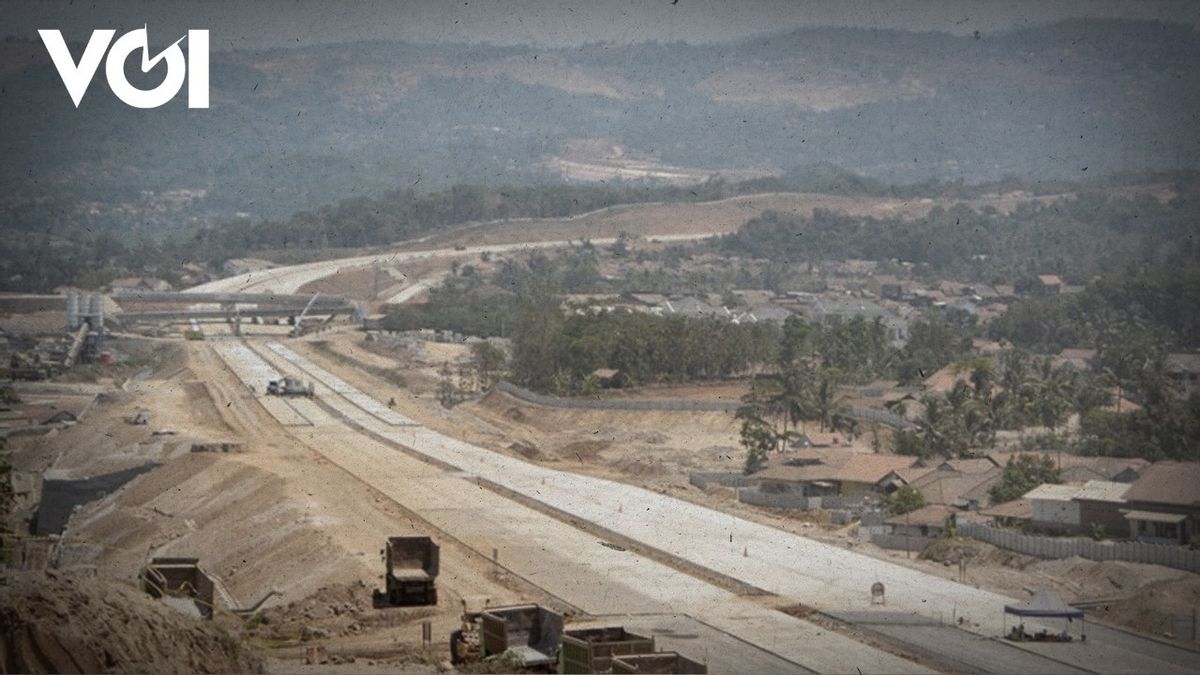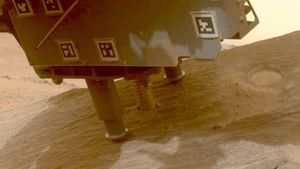
Through the article "Warding Off Hazards on the Cikopo Palimanan Toll Road", we have reviewed how to safely cross the Cipali Toll Road, which is known to be prone to accidents. Still part of VOI's signature series, "Be careful in Cipali", let us look at a broader perspective on the long history of the Cipali toll road construction.
The Cikopo-Palimanan (Cipali) Toll Road is the longest toll road in Indonesia. The expressway, which can cut travel time by half, has proved to be a blessing. But on the other hand, this road also often causes disasters with many cases of traffic accidents. So what actually caused the accident? If you look at the history of the development plan, was there any Ciplai Toll Road made with a lack of planning?
In its history, the construction of this toll road has passed through six regimes. The idea even existed since the era of President Soeharto's leadership. However, the project stalled due to the 1998 monetary crisis. Until then in the era of President Joko Widodo (Jokowi), this toll road was inaugurated for the first time on June 13, 2015.
Alois Wisnuhardana in a story from the corner of the palace (2019) explained that this toll road passes up to 116 kilometers. The Cipali Toll Road development is a continuation of the Jakarta-Cikampek Toll Road project which is part of the Jakarta-Palimanan Toll Road project. Therefore, the zero-kilometer point for Cipali Toll Road is Cawang, Jakarta. And this toll road is included in the category of the Trans Java Toll Road that connects Merak, Banten to Banyuwangi, East Java.
"The Cipali Toll Road is part of the Trans Java Toll Road project that passes through five districts in West Java, namely Purwakarta, Subang, Indramayu, Majalengka, and Cirebon Regencies. This toll road has 99 bridges connected with the Jakarta-Cikampek Toll Road and Palimanan-Kanci Toll Road", said the Minister of Public Works and Public Housing, Basuki Hadimuljono on the official website of the Ministry of PUPR.
The Cipali Toll Road construction concession has been held by PT Lintas Marga Sedaya since 2006. The company is an Indonesia-Malaysia consortium, between Utama Sedaya and also Plus Expressway.
Initially, when the initial contract was signed, Lintas Marga stated that the project cost was IDR 7.3 trillion. Five years have passed, the project has not yet started. Then when it was about to be continued, the budget soared to IDR 11.6 trillion. Finally, the investment value even swelled to IDR 13.7 trillion.
"By the business plan, we allocated funds for investment worth IDR 12.56 trillion. However, in later developments, there was an increase in investment totaling IDR 13.7 trillion," said Deputy President Director of PT Lintas Marga Sedaya Hudaya Arryanto was quoted by Kompas.

The cause of the accident
The high number of accidents in Cipali has made the road construction of this toll road into the spotlight. Launching Kumparan, Accidents that have happened so far can be caused by various things. The most likely factor is human error. The reason is that the road tends to be straight and long, making many drivers sleepy.
Not only that, another thing that makes accidents possible is the existence of a cliff resulting from the cutting of Bukit Salam that flanks the toll road. The length of each cliff is about 300 meters, while the top of the cliff is about 40 meters high.
The impact of the cut has turned the toll lane at kilometers 181-182 into the letter s. this condition makes the road winding and uphill. Because of this, this kilometer has become the most frightening toll road segment while in Cipali.
Moreover, on Salam Hill, there is a large stone with supernatural powers, the name Bleneng stone. It is said that the Bleneng stone cannot be moved, even when using heavy equipment. Residents also believe that the Bleneng stone clogged a giant spring, where if the stone was lifted, water would gush without stopping.
The myth of the Bleneng stone is getting stronger because less than a month from the inauguration ceremony - June 14 to July 7, 2015 - there have been 54 accidents on the Cipali Toll Road. Finally, in July 2015, a minibus with eleven people hit a truck carrying liquid cement at Kilometer 178. In the accident, seven people died and four were injured. As a result, many people have questions regarding the feasibility of operation and the Cipali Toll Road certificate.

The government opens its voice
Regarding the planning for the construction and construction of the Cipali Toll Road, the government claims there are no problems. This was conveyed by the Ministry of Public Works and Housing, Basuki Hadimuljono. According to him, more accidents were caused by driver fatigue, given the length of the Cipali Toll route.
"First, the accident was not due to the geometry or road conditions. Second, accidents occur at distant points, which is possible when the driver starts to get tired. Many fatal accidents have occurred from the direction of Cirebon to Jakarta, which is suspected of being experienced by drivers from Surabaya, Yogyakarta, and Semarang. Maybe those who are trying the new toll road are tired”, said Basuki as quoted by Majalah Tempo (2015).
However, at that time Basuki had considered various steps to reduce the number of accidents. Some of them by giving brief warnings to motorists at toll entrances, giving hot coffee, as well as by police patrols. "If there is a noisy chatter, the driver will become literate", concluded Basuki.
For this reason, it is hoped that drivers who will pass through Cipali have had sufficient rest. The driver must also be more active in maintaining the tire pressure from the vehicle. This is because data from the National Transportation Safety Committee (NTSC) reveals that about 80 percent of tire burst accidents occur due to insufficient tire pressure. In that context, since 2020, cases of tire burst accidents have been present on the Cipali Toll road.
“The tires on a vehicle may look trivial, but they are important to support which greatly affects the level of driving safety, especially on toll roads. If the air pressure on the tires is less, the consequences can be fatal. Moreover, if it is driven on a toll road at high speed, the tires can experience fatigue and breakage. Even if the position is raining and the toll road is inundated with water, the insufficient wind pressure on the tires can cause splits, resulting in the aquaplaning phenomenon", Said the Chairman of the NTSC Soerjanto Tjahjono.
The English, Chinese, Japanese, Arabic, and French versions are automatically generated by the AI. So there may still be inaccuracies in translating, please always see Indonesian as our main language. (system supported by DigitalSiber.id)












